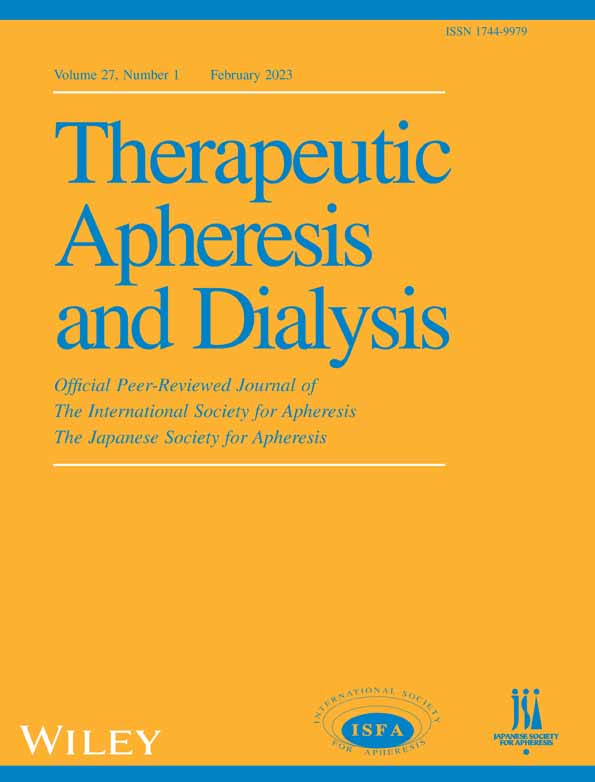Evaluation of thrombotic thrombocytopenic purpura and other thrombotic microangiopathies: Lessons learned from a 14-year retrospective study
Abstract
Introduction
Thrombotic thrombocytopenic purpura (TTP) is a clinical thrombotic microangiopathy (TMA) syndrome defined by the pentad of symptoms. Therapeutic plasma exchange with plasma replacement is an ASFA Category I modality that can reduce morbidity and mortality if initiated early. We describe a 14-year review of patients referred for plasma exchange with a suspected diagnosis of TTP.
Methods
For 70 patients referred for urgent plasma exchange, clinical, therapeutic, and laboratory data were retrospectively analyzed, and the diagnosis was determined.
Results
Fifteen of the patients were diagnosed with TTP based upon ADAMTS-13 activity with the other 51 patients having other non-TTP TMA diagnoses. The mortality rate was significant for both TTP and non-TTP TMAs. PLASMIC scores were also calculated retrospectively and were noted to have limited value. TMA is a diagnostic challenge and encompasses different syndromes with similar presentations.
Conclusion
Determining an accurate diagnosis, including prompt ADAMTS-13 testing, makes it possible to initiate appropriate therapy for the multiple different TMAs that can be seen in clinical practice.
CONFLICT OF INTEREST
The authors declare no conflict of interest.
Open Research
DATA AVAILABILITY STATEMENT
Data are contained within the article.




